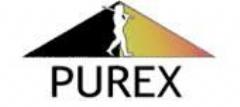 Add My Company
Add My Company
Sign In
Tackling Laser Fume Extraction on a Budget.
19-09-2006

The advent of smaller, less expensive marking and engraving lasers has opened the market to a whole new range of customers who demand performance on a budget. In all cases some form of fume extraction system will be required. Jon Young, Marketing Manager for Purex explains how a good fume extraction system can compliment the sale of these new lasers and give the end user excellent results with reduced downtime and costs.
Introduction
Marking (or coding) lasers are used in a huge variety of applications to add traceable information such as use by dates and batch codes to packaging and products. Examples of these applications are marking bottles in a beverage plant, batch coding of medical devices, marking PCBs and components in the electronics industry, adding data to cables and pipes and many others where permanent information needs to be added to a product. Engraving lasers are commonly used in the gift industry to mark logos and information onto pens, coasters etc. and can also be used to cut shapes in a variety of materials. Due to their increasing affordability and versatility, engraving lasers are also becoming more popular with school and college art and craft departments.
Both laser marking and laser engraving systems burn away layers of material to cut or mark a material. This process generates a fume that contains small toxic particles and gases that are hazardous to health. Some examples are Benzene and Toluene released from certain plastics and Chromium and Nickel given off by some metals. Virtually all materials (when processed) will emit some fumes that are hazardous to health; even cardboard and paper labels can produce respirable dust and formaldehyde.
Worldwide health and safety legislation deems it vital that these fumes are dealt with effectively as they can cause serious long-term medical conditions such as occupational asthma and leave employers open to expensive compensation claims by employees.
The particulate generated by laser processing can also coat or even damage expensive laser optics and cause beam attenuation leading to blurred or incomplete marks. If this dust is not removed efficiently it can also contaminate products that may need to be rejected and it can coat the laser enclosure and associated machinery meaning increased downtime for cleaning. A failure in fume extraction is usually a ‘line stopper’. In high volume production (e.g. PCBs, pharmaceuticals, food/beverage packaging) improperly coded products and the resulting downtime due to fume extraction failure can cost thousands.
For more information on Tackling Laser Fume Extraction on a Budget. talk to Purex International Ltd
Enquire Now
List your company on FindTheNeedle.
